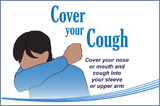Hand-Foot-Mouth
Hand-foot-and-mouth disease — It is going around!!! Read about prevention.
A mild,
contagious viral infection common in young children — is characterized by sores
in the mouth and a rash on the hands and feet. Hand-foot-and-mouth disease is
most commonly caused by a coxsackievirus.
There's no specific treatment for
hand-foot-and-mouth disease. You can reduce your child's risk of infection from
hand-foot-and-mouth disease by practicing good hygiene and teaching your child
how to keep clean.
Symptoms

·
Fever
·
Sore throat
·
Feeling of being unwell (malaise)
·
Painful, red, blister-like lesions on the
tongue, gums and inside of the cheeks
·
A red rash, without itching but sometimes
with blistering, on the palms, soles and sometimes the buttocks
·
Irritability in infants and toddlers
·
Loss of appetite
The
usual period from initial infection to the onset of signs and symptoms
(incubation period) is three to six days. A fever is often the first sign of
hand-foot-and-mouth disease, followed by a sore throat and sometimes a poor
appetite and malaise.
One
or two days after the fever begins, painful sores may develop in the mouth or
throat. A rash on the hands and feet and possibly on the buttocks can follow
within one or two days.
Causes
The
most common cause of hand-foot-and-mouth disease is infection with the
coxsackievirus A16.
Oral
ingestion is the main source of coxsackievirus infection and
hand-foot-and-mouth disease. The illness spreads by person-to-person contact
with an infected person's:
·
Nasal secretions or throat discharge
·
Saliva
·
Fluid from blisters
·
Stool
·
Respiratory droplets sprayed into the air
after a cough or sneeze
Treatments and drugs
·
There's no specific treatment for
hand-foot-and-mouth disease. Signs and symptoms of hand-foot-and-mouth disease
usually clear up in seven to 10 days.
·
A topical oral anesthetic may help relieve
the pain of mouth sores. Over-the-counter pain medications other than aspirin,
such as acetaminophen (Tylenol, others) or ibuprofen (Advil, Motrin IB, others)
may help relieve general discomfort.
Prevention
Certain
precautions can help to reduce the risk of infection with hand-foot-and-mouth
disease:
·
Wash hands carefully.
Be sure to wash your hands frequently and thoroughly, especially after using
the toilet or changing a diaper and before preparing food and eating. When soap
and water aren't available, use hand wipes or gels treated with germ-killing
alcohol.
·
Disinfect common areas.
Get in the habit of cleaning high-traffic areas and surfaces first with soap
and water, then with a diluted solution of chlorine bleach and water. Child
care centers should follow a strict schedule of cleaning and disinfecting all
common areas, including shared items such as toys, as the virus can live on
these objects for days. Clean your baby's pacifiers often.
·
Teach good hygiene.
Show your children how to practice good hygiene and how to keep themselves
clean. Explain to them why it's best not to put their fingers, hands or any
other objects in their mouths.
·
Isolate contagious people.
Because hand-foot-and-mouth disease is highly contagious, people with the
illness should limit their exposure to others while they have active signs and
symptoms. Keep children with hand-foot-and-mouth disease out of child care or
school until fever is gone and mouth sores have healed. If you have the
illness, stay home from work.
Mayo Clinic



















